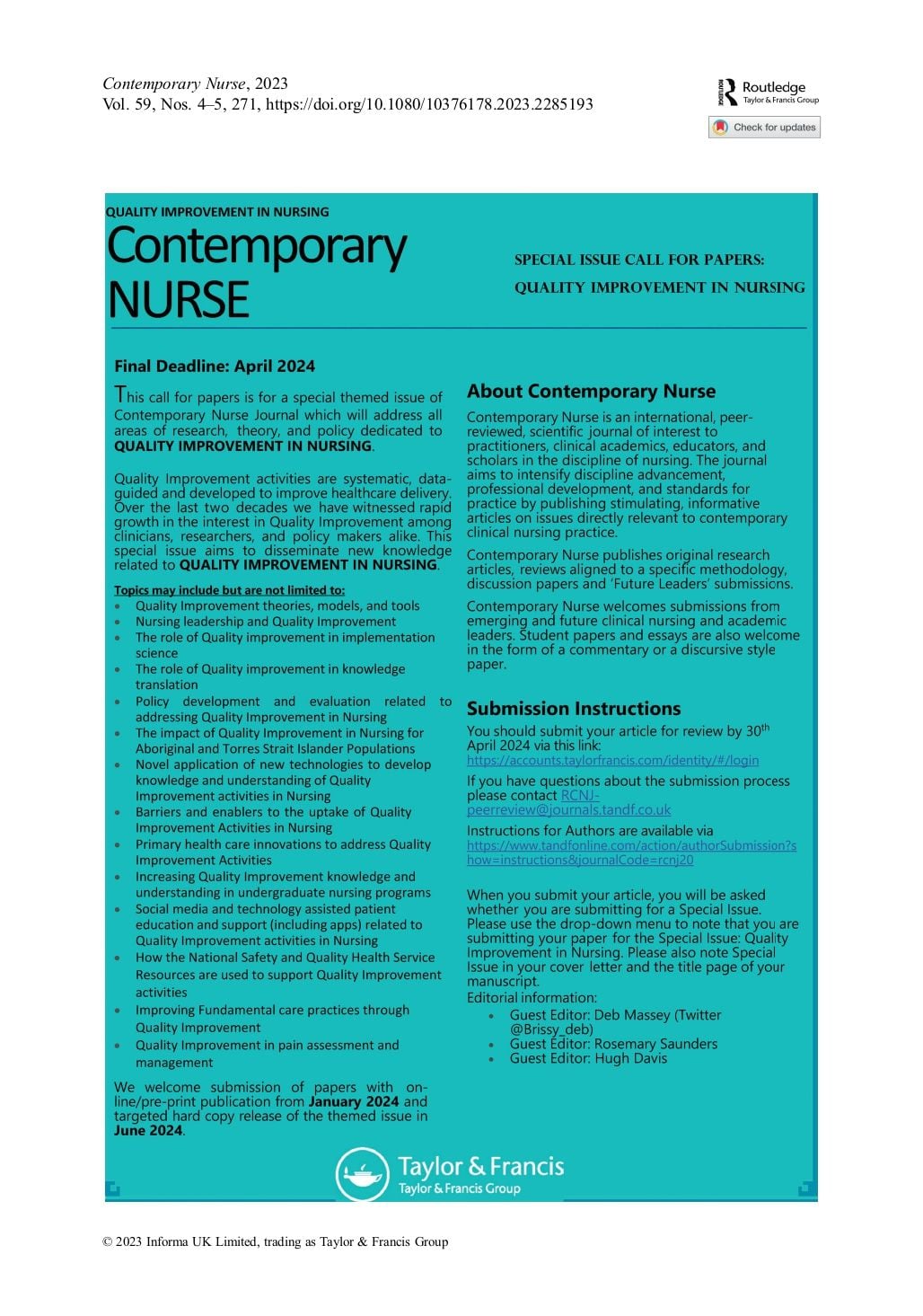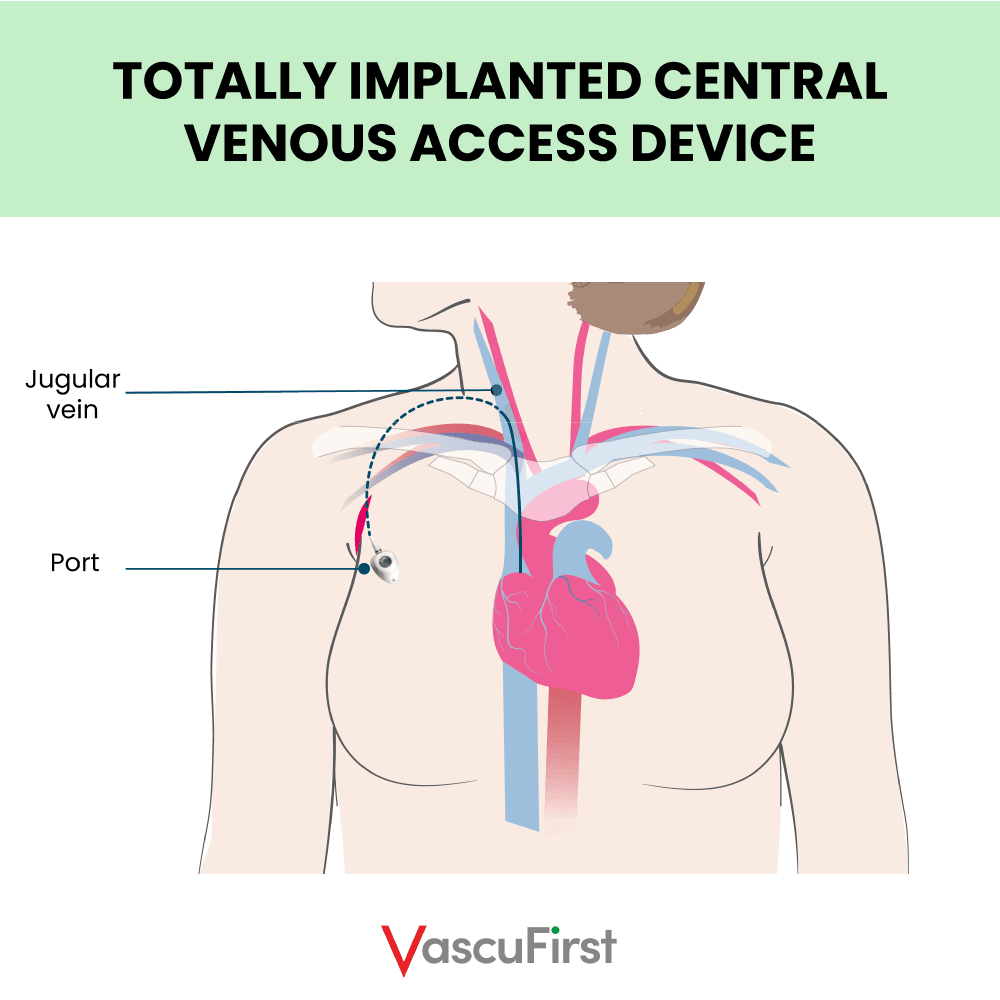IVNNZ Conference March 2024 - Register Today!
Posted
on 6 February 2024
)
AVATAR is thrilled to highlight an upcoming event that our colleagues across the ditch are organizing – the IVNNZ Conference in March 2024! Set against the backdrop of beautiful Wellington, this conference promises to be an exceptional experience.
Featuring a stellar lineup of world-class speakers, including AVATAR legend Dr. Evan Alexandrou, this event is not to be missed. Here's a brief glimpse of what's in store:
Date: March 22-23, 2024
Location: The James Cook Hotel Grand ...
Location: The James Cook Hotel Grand ...
| Posted in:AVATAReducation |
Shape the Future of Nursing: Your Opportunity to Contribute to Contemporary Nurse Journal
Posted
on 5 December 2023
)
Contemporary Nurse is an international, peer-reviewed scientific journal, provides a dynamic space for practitioners, clinical academics, educators, and scholars to share groundbreaking research and insights shaping contemporary nursing practice.
Aim and Scope: Elevating Nursing Standards
The journal's mission – to advance discipline, professional development, and practice standards.
Showcasing Excellence: Call for Papers
Contemporary Nurse proudly showcases original, high-quali...
| Posted in:AVATAR |
AVATAR November 2023 Highlights: Connecting, Collaborating, and Advancing Vascular Access Knowledge!
Posted
on 29 November 2023
Greetings AVATARians! It's time to catch up on the exciting events and progress within our AVATAR community. Here's a quick roundup of the November 2023 newsletter:
1. 2023 AVA Conference, Portland, Oregon
AVATAR made a significant presence at the Association for Vascular Access Annual Meeting in Portland, Oregon. Engaging discussions, insightful presentations, and valuable connections – the conference was a hub for advancing vascular access knowledge. A special ...
| Posted in:AVATAR |
Nathan Peters Awarded for ASUM AJUM Article of the Year Award
Posted
on 16 October 2023
)
We're excited to share some fantastic news from the AVATAR team! Nathan Peters has been awarded the prestigious ASUM AJUM Article of the Year award in the 2023 Awards of Excellence in Ultrasound.
Nathan's groundbreaking article, titled 'Remotely supervised ultrasound-guided peripheral intravenous cannulation training: A prospective cohort study examining success rates and patient experience,' has had a significant impact on both the ASUM (Australasian Society for Ultrasound i...
| Posted in:AVATAR |
Thiago Lopes Silva: Bridging Patient Safety and Vascular Access
Posted
on 6 September 2023
)
Thiago Lopes Silva is a PhD candidate from the Federal University of Santa Catarina, situated in Florianopolis, an island in the south of Brazil. Thiago has come to Brisbane for six months, where he's collaborating with Professor Amanda Ullman and Dr. Gillian Ray-Barruel, leading experts in vascular access. Thiago’s research focus lies at the intersection of patient safety and vascular access.
His doctoral research project, titled "Effect of the I-DECIDED? tool on the decision...
Welcoming Dr. Hideto Yasuda: Bridging Medical Frontiers from Japan to Australia!
Posted
on 8 August 2023
)
We're thrilled to introduce you to Dr. Hideto Yasuda, a distinguished physician hailing all the way from Japan. Dr. Yasuda has embarked on an incredible journey to the University of Queensland Centre for Clinical Research (UQCCR) in Brisbane, Australia.
Dr. Yasuda brings a wealth of experience as an emergency physician and intensivist, caring for patients facing severe sepsis, acute respiratory failure, and multiple trauma. With a strong passion for improving the prevention and man...
| Posted in:AVATAReducationpatient experience |
Understanding Chest and Neck Veins for Vascular Access: A Comprehensive Overview, by Dr Linda Kelly
Posted
on 30 May 2023
)
When it comes to vascular access, a thorough understanding of the anatomy and physiology of the veins in the chest and neck is vital. These veins serve as crucial pathways for the insertion of various catheters, such as acute central venous catheters (CVCs), totally implanted central catheters (TIVADs), and tunnelled central venous catheters (TCVCs). In this comprehensive guide, Dr Linda Kelly explores the intricacies of chest and neck veins and delves into important considerations ...
| Posted in:AVATARcentral vascular access deviceseducationvascular access devices |
Unleashing Innovation and Collaboration: ACIPC Conference 2023
Posted
on 19 May 2023
The 2023 ACIPC International Conference is just around the corner, and the Board of Directors is thrilled to invite you to be a part of this exciting event. Set to take place from November 12th to 15th, this year's conference will be held in a hybrid format, combining in-person sessions at the Adelaide Convention Centre in South Australia with online participation.
Under the captivating theme "Driving Forward: Embracing Fundamentals and Charting a Path for the Future," the conf...
| Posted in:AVATAReducation |
AVATAR April Newsletter
Posted
on 11 May 2023
We are pleased to share the April edition of AVATAR's newsletter, which highlights some of our recent events and achievements.
One of the highlights was the 50th Anniversary Infusion Nurses Society (INS) Annual Meeting, where several members of AVATAR had the opportunity to showcase their excellent work, including Professors Nicole Marsh, Amanda Ullman, and Andrew Bulmer, among others. The event was a great success and marked a significant milestone for the INS.
We're also excited t...
| Posted in:AVATAReducation |
Taking Blood Samples from a PIVC: Yes or No?
Posted by Dr Linda Coventry
on 21 March 2023
We are often asked if it's okay to take blood samples from a peripheral intravenous catheter (aka PIVC, cannula). In Australia, each state has a different policy, however, most allow blood draws on insertion of the cannula.
The Infusion Nurses Society Standards of Practice 8th edition (2021, page S129) has the following recommendations, based on evidence:
"Risks associated with sampling from a PIVC include hemolysis of the sample, contamination of the sample from infusing...
| Posted in:peripheral intravenous catheterevidence-based practiceblood sampling |








